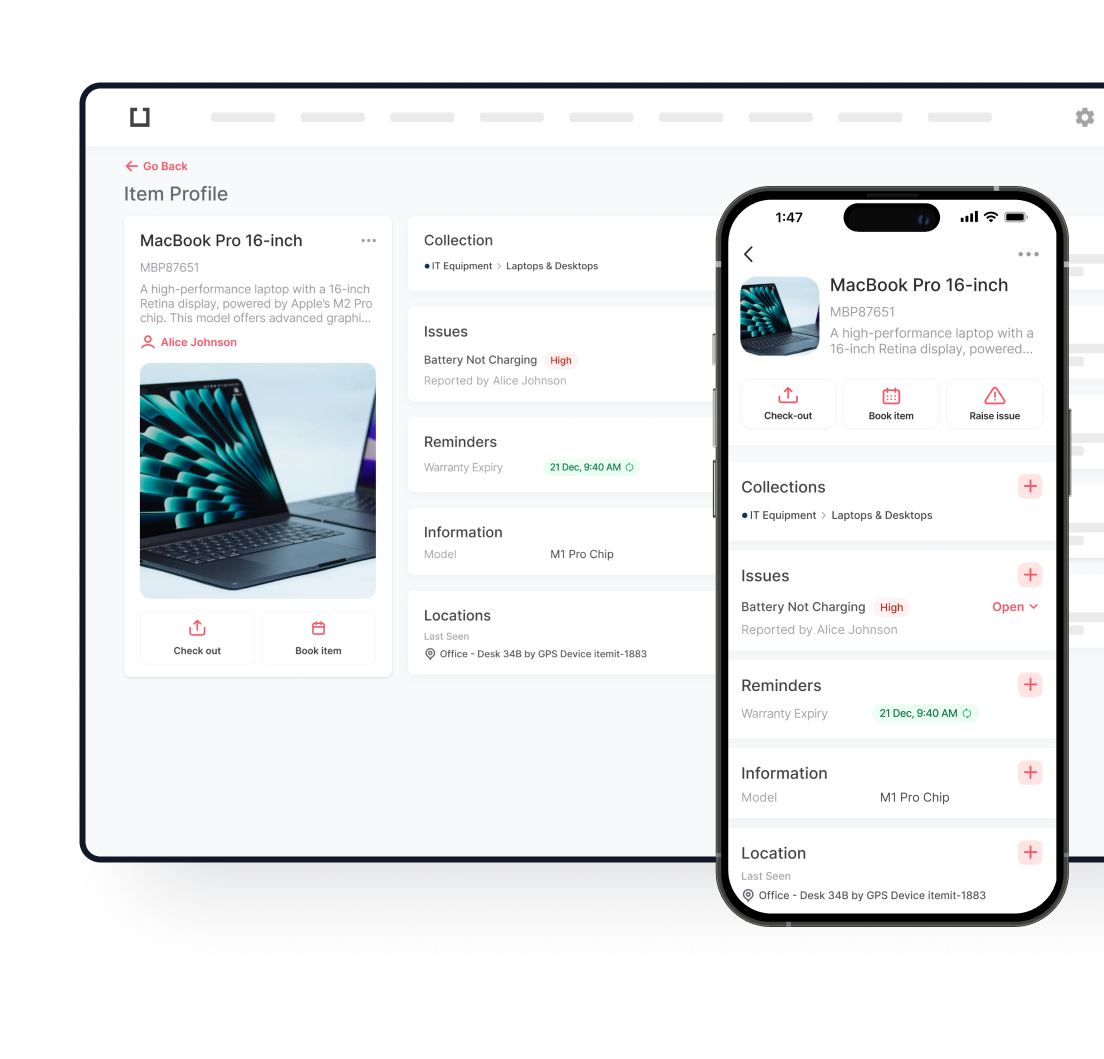
Disorganized construction storage drains budgets faster than most contractors realize. Tools go missing. Materials arrive late or get damaged. Proper material storage converts chaos into coordinated efficiency, directly impacting your project timelines and profit margins.
Key Takeaways
- Organized construction storage reduces material waste by up to 30% and prevents costly project delays
- Digital tracking systems eliminate manual inventory counts and provide real-time visibility across multiple job sites
- Proper storage layouts improve worker productivity by reducing the time spent searching for tools and materials
- Strategic material storage planning protects equipment investments from theft, damage, and environmental exposure
- Cloud-based platforms enable proactive ordering and prevent supply chain bottlenecks
- Asset tracking creates audit trails that satisfy insurance and compliance requirements
Why Storage Management Makes or Breaks Projects
Walk onto any construction site and you’ll see the story written in real time. Equipment scattered across muddy terrain. Lumber stacks are exposed to rain. Workers radioing back and forth trying to locate a specific tool. These problems represent money bleeding from your project budget. Every misplaced item translates into wasted labor hours. Every damaged material requires budget adjustments and schedule delays.
The construction industry loses billions annually to poor storage practices. A single misplaced excavator attachment can halt work for an entire crew. Damaged materials require emergency reorders at premium prices. Stolen tools mean rushed replacements and insurance claims. The ripple effects touch payroll, supplier relationships, and client satisfaction.
Smart contractors recognize that construction storage decisions cascade through their entire operation. Where you position materials determines how quickly crews can access them. How you protect tools affects their lifespan and reliability. The systems you implement for tracking assets control what you know about what you have, its location, and maintenance timing.
The Real Cost of Disorganized Storage
Numbers tell the brutal truth about storage failures. Research shows that construction companies waste 15-20% of their total material costs due to damage, theft, and over-ordering. Consider a typical scenario: your crew needs specific rebar for a concrete pour scheduled at dawn, but nobody knows if you have enough on site. Someone drives to the supplier. The delivery arrives late. The pour gets pushed to the afternoon. Your schedule dominoes.
Theft compounds these losses. A generator disappears overnight. Copper wire vanishes before installation. Power tools walk off during lunch breaks. Environmental damage erodes margins further—rain-soaked drywall becomes unusable, sun-damaged paint won’t perform, and lumber warps when stored improperly.
Building a Functional Storage Strategy
Effective construction storage starts with an honest assessment. Document where materials live, how workers access them, and what problems occur repeatedly. This baseline data reveals inefficiencies you might miss through casual observation. Zone your storage areas logically—heavy materials belong near delivery points, tools should cluster near their primary use areas, and weather-sensitive items need covered protection. Hazardous materials require isolated storage that meets safety regulations.
Create designated homes for everything. When each tool and material has a specific location, you eliminate the “where did we put that?” conversations. Workers develop automatic habits. New team members onboarded faster. Vertical space often goes wasted—racking systems, wall mounts, and overhead storage multiply your capacity without expanding your footprint.
Material Flow and Access Points
Your material management in construction strategy must account for how items move through the site. Materials arrive, get stored, become accessed, and eventually get consumed. Delivery zones need clear designation—trucks should reach them easily without navigating through active work areas. Think sequentially: if framers need lumber daily, that lumber shouldn’t sit behind materials the electricians will need next month.

Technology's Role in Construction Site Management
Digital tools have revolutionized how successful contractors handle construction site management. Gone are the days when clipboard inventories and memory served as tracking systems. Cloud-based platforms let you monitor multiple sites simultaneously. Check inventory levels from your office. Verify equipment locations from your truck. Approve material orders while meeting with clients.
Mobile apps put powerful capabilities in workers’ hands. Scanning a QR code reveals an item’s history, maintenance schedule, and current assignment. Workers check out tools with a few taps. Using asset tags for equipment makes tracking seamless—managers receive instant notifications about low stock levels. The system works regardless of cell service availability, syncing data when connections return.
Photo documentation integrates seamlessly with tracking systems. Workers snap pictures of delivered materials, damaged items, or work progress. These images attach automatically to the relevant assets. When disputes arise or insurance claims need to be filed, you have visual evidence ready immediately.
Improve Accuracy and Reduce Labor
Asset tracking platforms like itemit revolutionize construction storage through systematic organization and real-time visibility. The platform enables contractors to tag equipment and materials with QR codes or barcodes, creating a scannable inventory that eliminates guesswork. Workers check the platform in and out using mobile devices, establishing clear accountability chains.
This digital approach improves accuracy substantially compared to manual methods. Spreadsheets become outdated instantly. Paper logs get lost or misread. itemit maintains a single source of truth accessible to everyone. Labor savings emerge quickly—no more walking sites with clipboards doing manual counts or phone tag trying to locate specific equipment. The platform handles monitoring automatically, freeing your team for actual construction work.
Maintenance becomes proactive instead of reactive. itemit sends reminders before equipment needs service, preventing breakdowns. The offline functionality proves invaluable where connectivity is spotty—workers continue scanning without internet access, then sync automatically when reconnected.
Securing Your Investment Through Smart Storage
Construction theft requires more than locks and fences—it demands layered security thinking. Visibility works as a powerful deterrent. Well-lit storage areas discourage after-hours intrusion. Clear sightlines from trailers or security cameras eliminate hiding spots. Signage indicating tracking systems makes thieves reconsider if your site offers an easy target.
A robust construction asset tracking system creates digital breadcrumbs for every item. Permanent markings deter theft by making resale harder. Engraved serial numbers can’t be easily removed. Physical barriers still matter. Fencing with controlled access points channels traffic and creates accountability.
Connecting Storage with Project Scheduling
Smart construction site management synchronizes material delivery with actual need. Just-in-time delivery reduces on-site storage requirements and minimizes damage risk. The sweet spot lies in strategic buffering—order critical materials with enough lead time to absorb supplier delays while coordinating deliveries to arrive within days of use, not weeks.
Familiarity with RFP in construction processes helps you plan storage needs before breaking ground. Request for Proposal documents should address material staging areas, delivery schedules, and storage responsibilities. Specify delivery windows and clarify liability for stored materials.
Phase-based planning aligns storage with construction sequences—your storage footprint should shift as the project progresses. Foundation work requires different materials than framing, which differs from finishing trades. Map your material needs against your construction schedule. Create a material flow calendar that shows when categories arrive, get consumed, and clear out.
Subcontractor coordination becomes critical. Each trade brings their own materials and tools. Hold pre-construction meetings where each subcontractor presents their material delivery schedule and storage requirements. Assign dedicated zones to prevent competition for the same space.
Lead time management separates successful projects from chaotic ones. Track typical delivery periods for all major material categories. Build these lead times into your schedule with buffer days for unexpected delays. Order long-lead items first. Sequence shorter-lead materials to arrive closer to installation dates.
Warehouse and Field Coordination
Large contractors operating dedicated inventory warehouse management facilities gain competitive advantages through centralized control. A well-run warehouse serves as a buffer against supply chain disruptions and enables bulk purchasing discounts. You can stock up when prices dip and deploy materials as projects need them. This strategic approach protects against market volatility and supplier delays.
Warehouse organization mirrors on-site storage principles but at larger scale. Clear labeling, logical grouping, and systematic placement create efficiency. Fast-moving items get positioned near loading docks. Seasonal materials rotate to appropriate accessibility. Everything has a designated spot that workers grasp intuitively.
The gap between the warehouse and the field often creates communication breakdowns. Foremen request materials that the warehouse shows as unavailable. Warehouse staff ship items to the wrong sites. Integrated tracking systems bridge this gap seamlessly. When site supervisors check inventory availability, they see real-time warehouse stock levels.
Your construction inventory tracking approach should encompass both locations. Items don’t exist in isolation at warehouses or on sites—they flow between locations constantly. Tracking this movement provides crucial visibility into your supply chain dynamics.

Training Teams for Storage Success
The best storage systems fail without proper adoption by your crews. Workers need to grasp not just the rules, but the reasoning behind them. When people see how the organization helps them personally—finding tools faster, reducing frustration, preventing injury—compliance improves substantially. Hands-on training beats abstract instruction. Walk crews through your storage layout, demonstrate the scanning systems, and let workers ask questions.
Measuring Storage Performance
You can’t improve what you don’t measure. Establishing key performance indicators for your material storage practices provides objective feedback. Track the time workers spend searching for tools and materials. Log instances of delayed work due to material unavailability. Monitor theft and loss percentages across different sites. Compare secured areas against unsecured. Evaluate how tracking systems reduce disappearances. Survey your crews about storage satisfaction—workers on the ground spot inefficiencies that managers miss.
Safety and Environmental Considerations
Proper storage protects both people and the environment. Hazardous materials require compliant separation and containment. Fuel, solvents, and chemicals need ventilation, grounding, and spill prevention measures. Fire prevention demands attention—combustible materials need distance from ignition sources. Load-bearing limits affect how you stack materials. Knowledge of soil conditions, flooring ratings, and racking specifications prevents tragic accidents.
Final Thoughts
Optimized construction storage represents a competitive advantage hiding in plain sight. When materials arrive intact, workers access tools instantly, and equipment gets maintained proactively, projects finish faster and more profitably. Start small but start now—pick one problematic area and implement a solution that builds momentum for broader changes.

Try itemit
Choose a better way to track
your assets.
Start your free 14-day trial now!
Frequently Asked Questions
How much space should I allocate for construction storage on a typical project?
A general guideline suggests 10-15% of your total site area for material storage. Urban high-rises with just-in-time delivery might need only 5%, while remote projects could require 20% or more. Consider peak storage needs during different construction phases rather than averages.
Should I use QR codes, barcodes, or RFID for tracking construction assets?
QR codes and barcodes work excellently for most contractors—they’re inexpensive and workers can scan them with smartphones. RFID becomes cost-effective for large fleets where bulk scanning saves time. Start with QR codes for immediate implementation, then evaluate RFID for high-volume applications.
What's the best way to organize tool storage for multiple crews?
Assign each crew a dedicated tool sections or container that match their work. Color-code or label areas clearly by trade or crew. Use shadow boards where tool outlines show what’s missing at a glance. Gang boxes or job boxes assigned to specific crews create ownership and accountability.
What's the best way to organize tool storage for multiple crews?
Assign each crew a dedicated tool sections or container that match their work. Color-code or label areas clearly by trade or crew. Use shadow boards where tool outlines show what’s missing at a glance. Gang boxes or job boxes assigned to specific crews create ownership and accountability.
How often should I conduct physical inventory audits versus relying on digital tracking?
Even with excellent digital tracking, conduct quarterly physical audits to catch discrepancies. High-value equipment warrants monthly verification. Perform random spot checks between full counts. Compare physical counts against system records—aim for 95% or higher accuracy.

Keep Learning
itemit Blog
Tips, guides, industry best practices, and news.
How to Create an Effective Construction Management Plan for Your Project
Create an effective construction management plan that improves safety, minimises delays and keeps your project organised and on track from planning to completion.
A Complete Guide to Construction Cost Management and Planning
Effective construction cost management and planning improve profitability, enhance financial stability, and strengthen resource allocation across every project.
Key Strategies for Successful Construction Business Development
Smart strategies for construction business development that help attract clients, increase project success, and drive sustainable growth in a competitive market.



